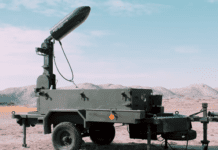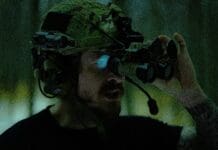This post is also available in:
 עברית (Hebrew)
עברית (Hebrew)
Technology, networking, and unmanned systems are expanding the potential combat applications of a powerful tank, multiplying its warfare impact. The Abrams main battle tank could soon be operating air and ground drones in the line of enemy fire or sending large robotic vehicles to clear tank ditches and breach obstacles. It could also use long-range, high-fidelity sensors to maneuver and target enemies in more dispersed formations.
As evidenced by the now arriving M1A2 SEPv3 variant, today’s and tomorrow’s Abrams is a much more capable and different tank than the platform has been in recent years. It has improved armor protections and a new generation of computing and command and control. Moreover, the tank has modernized thermal, upgraded infrared targeting sensors enabling longer range, more widely scoped target identification and vastly expanded on-board electrical power through integrated mobile auxiliary power units.
The v3 also operates with new dimensions of GPS connectivity, moving map displays, threat-based intelligence data, force tracking systems and an upgraded engine and transmission.
The on-board computing and electronics are also intended to add the technical infrastructure for yet a new series of upgrades for the platform with the now emerging and underway v4 variant. This will bring third-generation Forward Looking Infrared sensors, a new generation of ammunition data links and an entirely new varied, adjustable and much more capable Multi-Purpose Round ammunition able to fire high-explosive anti-tank rounds, multi-purpose rounds and canister rounds intended to expand dispersed fragmentation for anti-personnel lethality.
The Abrams v3 and v4 are being engineered to perform both traditional tank combat operations as well as an entirely new sphere of needed warfare tactics. These tactical dynamics explain why the US Army continues to refine new concepts of traditional Combined Army Maneuver tailored to a new generation of threats.
Among many things, some of the new dimensions pertain to the ongoing massive, strategic and tactical expansion of unmanned systems, multi-domain air-ground connectivity and much better networked, and therefore dispersed, warfare maneuver formations.
Newer v3 and v4 tanks will be able to operate, and possibly even dispatch, air and ground drones to carry ammunition, test enemy defenses, counter enemy obstacles and countermeasures and surveil forward, high-risk areas under enemy fire, as reported by nationalinterest.org.

























